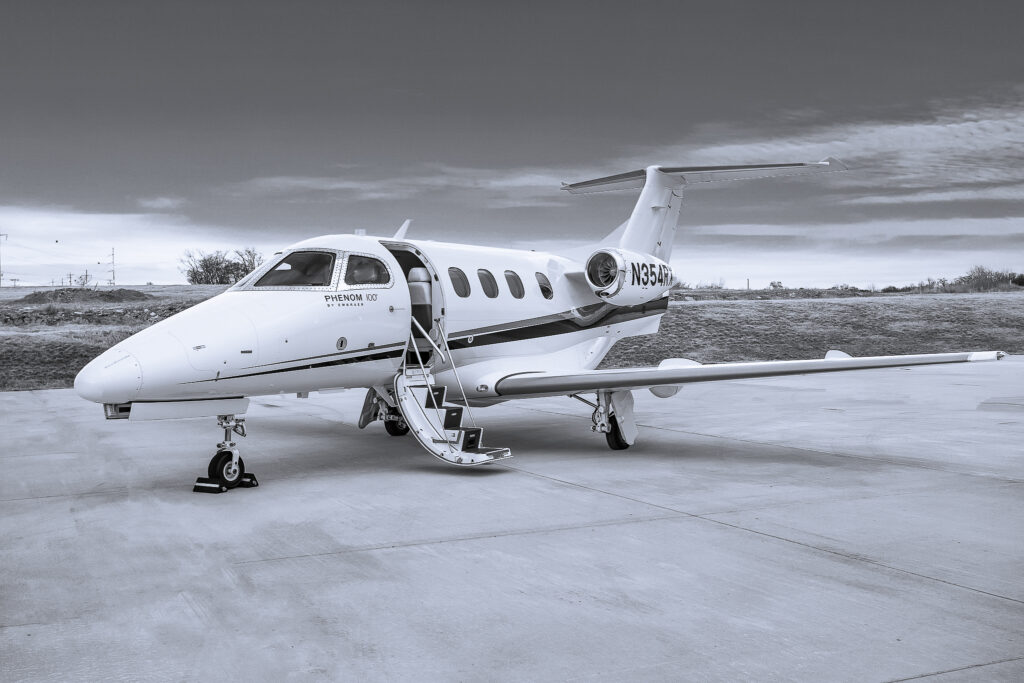
The Socata TBM 850 has been a highly acclaimed aircraft in the owner-operator world of single-engine turboprops for over three decades. This upgraded version of the original TBM 700 has become a popular choice for single-pilot operations who desire light jet speeds and mission versatility.
Introduced in 2006, the Socata TBM 850 is an 850shp version of Daher-Socata’s six-seat TBM 700 single-engine pressurized turboprop business aircraft. With a maximum cruise speed of 320ktas, the TBM 850 is touted as the fastest single-engine turboprop in the world.
The TBM 850 is a direct descendant of the TBM 700, which was first certified in 1990. Over the years, several upgraded versions of the TBM 700 were introduced, including the 700B, which added a larger cargo door and an optional pilot entry door, and the 700C1 and C2, which featured a new air-conditioning system, increased maximum take-off weight, and a reinforced airframe and landing gear.
The TBM 850, also known as the 700N, was developed from the 700C2. By March 2009, around 500 TBM-series aircraft had been sold, with more than 200 of them being the 850 version. The TBM 850’s top speed of 320ktas puts it close to that of light business jets, which are more expensive to operate. Its certified ceiling is 31,000ft, it carries a maximum payload of about 650kg, and it has a maximum range of 1,400nm to 1,585nm (about 1,600 to 1,800 miles). It can also land on as little as 2,100ft of airstrip.
The TBM 850 is a low-wing monoplane constructed primarily from aluminum and steel. Its airframe uses fail-safe structural design techniques, such as multiple load paths and a crack-stopper band. Most of its structure is made from conventional aluminum alloys, with the wing spars, flap tracks, and windshield frames machined from solid bars of aluminum. Leading edges and undercarriage doors, meanwhile, are made from carbon-fiberglass composite.
The empennage consists of a vertical stabilizer with rudder and a 6.5° dihedral horizontal stabilizer with elevator for high maneuverability at high and low speeds. Actuation of the 850’s control surfaces is by mechanical push/pull tubes, while its landing gear is electrically controlled and hydraulically actuated. The TBM 850’s dual-zone pressurization system can maintain a 9,350ft cabin altitude at 31,000ft and a 6,400ft cabin altitude at 25,000ft.
The TBM 850 comes equipped with the Garmin G1000 (Garmin G1000 NXi also available) avionics system. This all-glass integrated flight deck consists of the latest technology, including:
• Two 10.4” TFT LCD Primary Display
• A 15” TFT LCD Multi-Function Display (MFD)
• Two digital audio controllers
• Two solid-state Attitude-Heading-Reference-System
• Two digital Air Data Computers
• Two Nav/Com/ILS/WAAS/GPS receivers
• Two Tri-axial Magnetometers
• Digital integrated Automatic Flight Control System
• Color weather radar
• Terrain Avoidance System
• In-flight traffic avoidance system (TCAS)
• Chart View (XM weather link)
The Garmin G1000 provides pilots with unmatched comprehensive situational awareness, increasing ease of operations and security to the highest level.
The TBM 850 is powered by a Pratt & Whitney PT6A-66D turboprop engine, flat-rated at 850shp (634kW). The engine is limited to 700shp for take-off and landing, but in cruise flight, the engine power can be increased to 850shp, giving the TBM 850 a higher cruising speed than the TBM 700s, especially at high elevations. The climb rate from sea level to 31,000ft, at its maximum take-off weight, is 20 minutes.
To monitor both aircraft power plant and major systems, the TBM 850 is equipped with state-of-the-art instruments displayed conveniently on the central G1000 color 15” MFD. Instruments include:
• Engine Control Gauges
• Cabin Pressurization Display
• Fuel Quantity and Flow Monitoring
• Battery, Generator, and Bus Displays
• Engine Trend Monitoring (ETM)
• Crew Alerting System
The TBM 850 features a luxurious cabin measuring 4.56m long, 1.22m high, and 1.22m wide, with six leather seats. The standard configuration consists of four seats and a two-piece rear bench seat. The seats have individual fresh-air or warm-air vents, individual reading lights, a folding executive table, and power outlets.
The cabin is easily accessible through a large electric door, stairs, and ramp. To ensure the comfort of passengers and crew, the TBM 850 boasts a fully automated dual-zone environmental control system, as well as ample lighting and storage space.
The TBM 850 has consistently been a popular choice in the aircraft market, with 16 out of 323 aircraft in the available fleet currently for sale, or 4.95%. Over the past six months, average prices have lowered slightly by. As we make our way through Q2, we anticipate inventory levels to remain steady, further adding to pricing competition in the marketplace.
TBM 850 as a Trade-In and Step-Up Aircraft
21 Aviation has worked with several aircraft operators transition from the TBM 850 into the Embraer Phenom 100. With its impressive speed, range, and versatility, the Phenom 100 offers a similar economical option for pilots who want to transition from their current aircraft to a light-jet
The Socata TBM 850 has firmly established itself as a top contender in the single-engine turboprop market. With its impressive performance, state-of-the-art Garmin G1000 avionics system, and luxurious interior, the TBM 850 is an ideal choice for pilots who desire light jet speeds and mission versatility.
